For quick readers:
Studying human evolution to understand more about the natural human diet is a smart move. But rarely, do we come across the (scientifically established) fact that fruits have coevolved with human ancestors and, thus, fruit evolution is intertwined with our evolution: The (seed) dispersal syndrome explains how fruit characteristics and nutrition are shaped by their seed-disperser (the fruit consumer). Why does this matter for the natural human diet? Because in the case of humans, it’s the tropical fruits that have coevolved with our frugivorous ancestors! The dispersal syndrome matters in understanding the important role of tropical fruits in nutrition!
Why do we love sweet, colorful fruits? Why are tropical fruits so healthy for us? It’s evolution! Plants attract animals – and humans – with appealing, colorful, tasty fruits so that they disperse their seeds. Plants reward the fruit-eaters with energy (simple sugar) and nutrients for transporting their seeds to grow in distant places. Thus, fruits are a pay-off of plants for seed dispersal (read more here)! This symbiotic fruit-frugivore relationship drives evolution: The “dispersal syndrome” explains that frugivores (fruit-eating animals) shape fruit characteristics over time:
Fruit color and taste are not random…
The fact that fruits look and taste so good to us is no coincidence or random chance – it is the product of evolution!
Plants don’t invest energy into fruit for no reason! As giving as they are, they don’t simply want to make this world a wonderful place for fruit eaters! Plants have a “motive” for why they developed all the flavors, colors, textures, and sensations that make frugivores (fruit-eaters) go crazy for them: reproduction!
But what does this have to do with humans loving fruits???

Biologically, humans are still frugivores, which is why we find fruits so tasty and attractive. We love sweetness because that is how we are attracted to our natural food source and gain energy!

The evolutionary dance between attractive fruit traits and frugivore choice results in sweet delicious flavors, luscious vibrant colors, and a perfect source of nutrition for – including humans!

What is the dispersal syndrome?
The dispersal syndrome describes the evolutionary phenomenon that fruits are shaped by the preferences and choice of the fruit-eating animal.
Fruit production is one of the most energy-intensive processes in a plant’s life. The sugars, minerals, vitamins, and everything that goes into fruit are not cheap for a plant to produce (read more here about fruit ripening and nutrition). This reflects just how important attracting dispersers is to the plant, and how beneficial it can be for their reproduction. It is no doubt that plants and their dispersals have very intimate relationships that drive evolution – this dynamic is called “dispersal syndrome” in evolutionary biology.
Click to expand:
Yet, due to the vast diversity on our planet and all the ecological niches that can possibly exist, each fruit-bearing plant has developed unique strategies to be successful at this endeavor. Depending on their location and niche, fruits developed specific traits that attracted specific dispersers, and sometimes traits that dissuaded others. Some fruits are designed to be dispersed by birds, while others by primates, lemurs, elephants, and almost any animal you can think of.

The most apparent frugivore-driven selection is easily seen in fruits dispersed by birds: These plants typically have small fruits and small seeds, which can easily be consumed whole directly from the plant by a bird. The smaller the fruit, the smaller the bird it wants to attract. Bird-dispersed fruits are also often red, high above the ground, and rich in sugars.
Frugivores, including humans, drive fruit evolution and nutrition
Frugivores have played a role in the evolution of fruit: Over time, fruits have been shaped to suit the preferences of frugivores who exerted evolutionary pressures on countless plant species to produce the most delicious and nutritious fruits. Those seeds get more successfully dispersed than fruits that are not as pleasant to the frugivore – thus, the “delicious and nutritious genes” get an advantage.
Fruits and its consumer depend on each other, which is why plants offer nutritious fruits to frugivorous animals. In exchange, animals transport the seeds in the fruits. A dynamic that enhances nutrition, smell, and taste, while decreasing toxic plant defense compounds over time and makes fruits a uniquely healthy food source:
Plants with the most delicious tastes, vibrant colors, and essential nutritional qualities were most likely to be sought after and thus have their seeds dispersed. Thus, the frugivore’s choice influences the fruit genetics that is dispersed.
This includes humans and human ancestors, which were highly frugivorous – like most primates and all apes today! This past still has consequences today, because our species-specific (evolutionary) diet is the result of this evolution dance of our ancestors and their food sources:
Humans have coevolved with tropical fruits: our perfect match!
The coevolutionary process explains why not all fruits are equally suitable as a food source for all frugivores. So what about humans? What types of fruits are best for us? Considering the evolutionary past, tropical fruits are the main food source for apes, and the best match for humans, too. As tropical frugivores, no wonder most wild tropical fruits are edible for us! Read more here.
Biologically humans are still frugivores like our ancestors: we are a frugivorous species that originated in the tropics, which is why edible tropical fruits match our nutritional needs and are generally the healthiest fruits for us (read more here).

In contrast to fruits that originate in colder, temperate climates, most wild tropical fruits are edible. Many temperate fruits had to be hybridized and selectively bred to suit our needs and turn them edible! Some of the most popular veggie fruits we eat today were even toxic in their wild form.

Not all fruits are equally suitable for all frugivores
While primates or other animals may also enjoy eating some of the bird-dispersed fruits, plants with a preference for bird dispersal may even develop antagonistic traits to dissuade certain consumers. This is why not all types of fruits are suitable as food sources for all types of frugivores. It is often a specific match, and some fruits are not edible or even toxic to a frugivore, depending on the evolutionary history.
The easiest example of this is the chili pepper. While some of us enjoy the taste of chili, most mammals don’t dare to eat a spicy pepper. Birds, on the other hand, don’t sense spiciness and can easily consume even the most spicy peppers. Indeed, peppers developed traits to ward off animals who were inferior dispersers. Spines and thorns, like those found on Blackberries and Roses, are also believed to be preferential for bird dispersal. While many mammals have trouble with these spikey protrusions, small agile birds can’t be bothered by them.
Seed dispersal (or fruit consumption) can be specific or even highly specialized. For example not all fruits can be dispersed by birds. Fruits with large seeds, for example, receive no benefit from having a bird pecking at its fleshy fruit without dispersing its seed. These plants developed large seeds to ensure their offspring have a good store of energy to germinate from, but they had to develop traits to be attractive to different types of dispersers.
On the other hand, many fruits may be opportunistic and designed to attract a large variety of dispersers. Certain fruits may have also changed their disperser preferences at various times throughout evolutionary history.
Significance of fruit traits for frugivores
Plants “discovered” the perfect way to achieve seed mobility through the help of animal dispersers by concentrating sugars, vitamins, and other nutrients into the flesh around their seeds. For frugivores to be able to detect fruits and to be be attracted to them in the first place, the plant evolved different features in response to the frugivores preference and choice:
1. Fruit Color
While fruit color isn’t important from a nutritional standpoint, it does play an important role in effective dispersal. That’s because of the simple fact that they must be seen before they can ever be consumed. If your fruit is brightly colored and easily stands out from the background of leaves and vegetation, it is more likely to be eaten.

This is particularly true for birds and primates who have well-functioning color vision. Fruits designed for color-blind (often nocturnal) animals tend to have dull colors and may use other odors or other traits to attract dispersers.
Not surprisingly, research shows that the evolution of primate color vision allowed us better detect and select brightly colored fruits. Frugivorous primates, all apes -including humans – have evolved specialized trichromatic vision. Like this, primates may have exerted evolutionary pressures on fruit color (although we may have played an antagonizing role towards plants that already developed colors for the sake of dispersal by birds).
Lastly, fruit color is not only important to signal the mere presence of fruit but also to show that it’s ripe and ready to eat. It ensures that animals know when the fruits are most delicious to eat, and likewise have completely developed seeds.
2. Fruit Nutrition and Flavor
Of all the creative means that plants have evolved to attract animal dispersers, none is more important than a high nutritional value. After all, it’s some of the nutrients in fruits that make our taste buds go wild for them. In particular, our need for energy-rich calories has driven plants to load fruits with natural fruit sugars like fructose which fuel the metabolism of frugivores – the reason we love sweetness! But also other nutrients are matched to the frugivores’ need. For example, tropical fruits contain the perfect ratio of omega-6:3 in contrast to fruits that have evolved with birds.
A few fruits, like the Avocado and the Ackee fruit, learned to tempt frugivores through fleshy tissues rich in plant-based oils. Plants also developed unique flavonoids, tri-terpenes, and other secondary compounds that further enhanced their flavors.
Monk Fruit, known for its use as a zero-calorie sugar alternative, uses a deceptive strategy to gain the favor of dispersers. It makes a “fake sugar”, mogrosides, that is much less energy-intensive to produce while producing a potent sweet flavor that tricks animals into thinking they are getting the real thing!

As a side note, non-caloric sugars are certainly not desirable from a holistic, natural nutritional point of view – as frugivores, we are well adapted to using glucose and fructose as fuel for our cells! In fact, we need those sugar to power our cells and body, and ketogenic diets are not natural or healthy in the long run!
3. Fruit Smells and Aromatics
While smells are important to the flavor profile of many fruits, they also help animals who are not so visually talented to find their fruits. Many fruits contain volatile oils, triterpenes, and other aromatic compounds that can be easily sensed from a distance, even in a dense forest-like setting. Durian, Jack Fruit, and a wide number of fruits produce these potent aromas just for this reason. Some fruits don’t have strong odors and are suited for animals like birds, who don’t have a strong sense of smell to begin with.
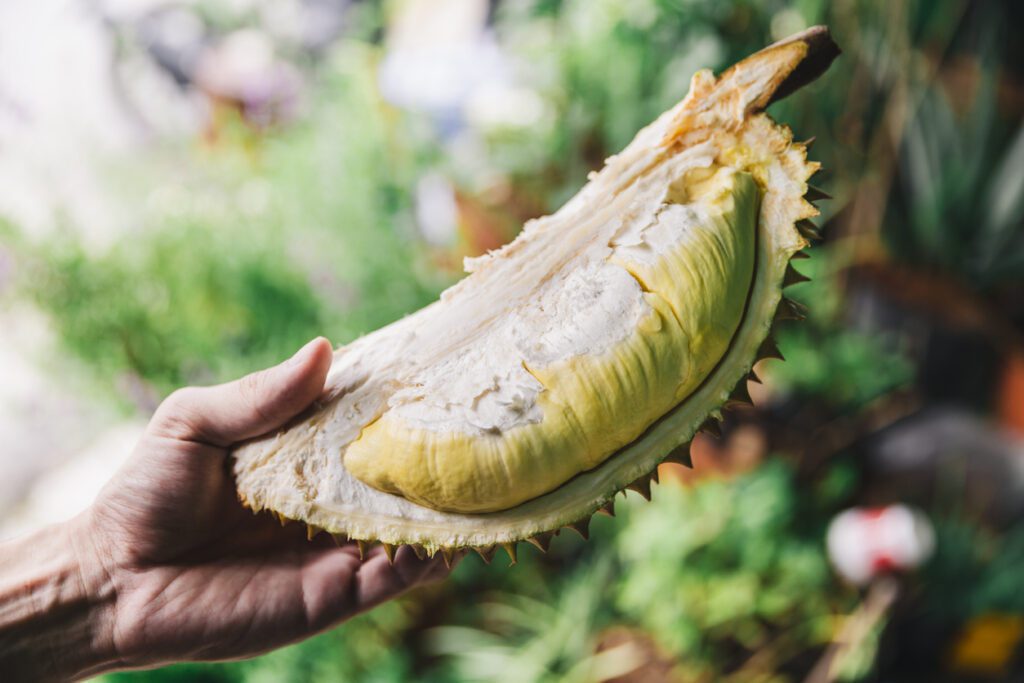
Traits of fruits dispersed by primates
Frugivorous primates and their fruits are of special significance to understand our own natural diet. Frugivorous primates live mostly in tropical climates and forage tropical fruits. So let’s have a look at the fruit traits that have evolved with our ancestors and closest relatives:
Note that nutritional content also coevolves and is a factor for frugivore’s choice – a fact that should be considered when evaluating the natural, evolutionary diet of humans.
| Fruit Traits | Importance for Frugivores |
|---|---|
| Bright Coloration | Fruits often have bright, contrasting colors when ripe to attract primates who have good color vision. |
| Size | Fruits can be relatively large, fitting the capability of primates to handle and consume bigger fruits. |
| High Nutritional Content | They contain high levels of sugars, vitamins, and other beneficial compounds to make them an attractive food source. |
| Odor | Some fruits emit a strong odor when they are ripe to attract primates from a distance. |
| Taste | Fruits often have sweet or savory tastes which are preferred by many primates. |
| Positioning on Tree | Fruits may be located high in the tree canopy where they are more accessible to tree-dwelling primates. |
| Seed Size and Toughness | Seeds may be too large or tough to be consumed, thus surviving digestion, or are spit out by primates. |
| Fruit Structure | Fruits may have a structure that is easy for primates to open or peel by hand. |

Chimpanzees, our closest relatives, are highly frugivorous, like all apes.

Picture of a tropical market: It is no coincidence that we find the (tropical) fruit section at markets the most beautiful and appealing one – we are frugivores, too!
Megafaunal Dispersal Syndrome
Fruits say a lot about the animals they intend to attract. Small bright colored fruits are perfect for birds who swallow them whole, while those which fit in the palm of your hand are perfect for primates like us. Yet, there exist numerous fruits so big and seeds so humongous that they seem unsuitable for dispersal by even the largest terrestrial animals. Avocado and fruit of the gourd and squash family are prominent examples.

While people have speculated about this for centuries, today there is good evidence that these fruits weren’t designed for animals of today. Instead, they evolved to attract the now-extinct megafauna, like giant sloths and mammoths.
While the fossil evidence suggests many of the megafaunal dispersed fruits are now extinct, some of them have stuck around. These plants managed to find other ways to disperse their seeds, although likely less effectively than before. Researchers believe that plants with megafaunal dispersal syndrome actually have a much more restricted range than they would have had in nature.
Artificial Selection and Domestication
It’s worth mentioning that many of our favorite fruits are significantly different than their wild relatives – especially temperate fruits, which are not an original food source of primates! While most tropical fruits have also been domesticated, their wild type is actually edible. Temperate fruits, on the other hand, had to be made fit for human consumption in the first place! To suit our needs as tropical frugivores, fruits from colder climates have been selectively bred and hybridized to resemble their tropical counterparts: sweeter and bigger. Read more about this topic here.
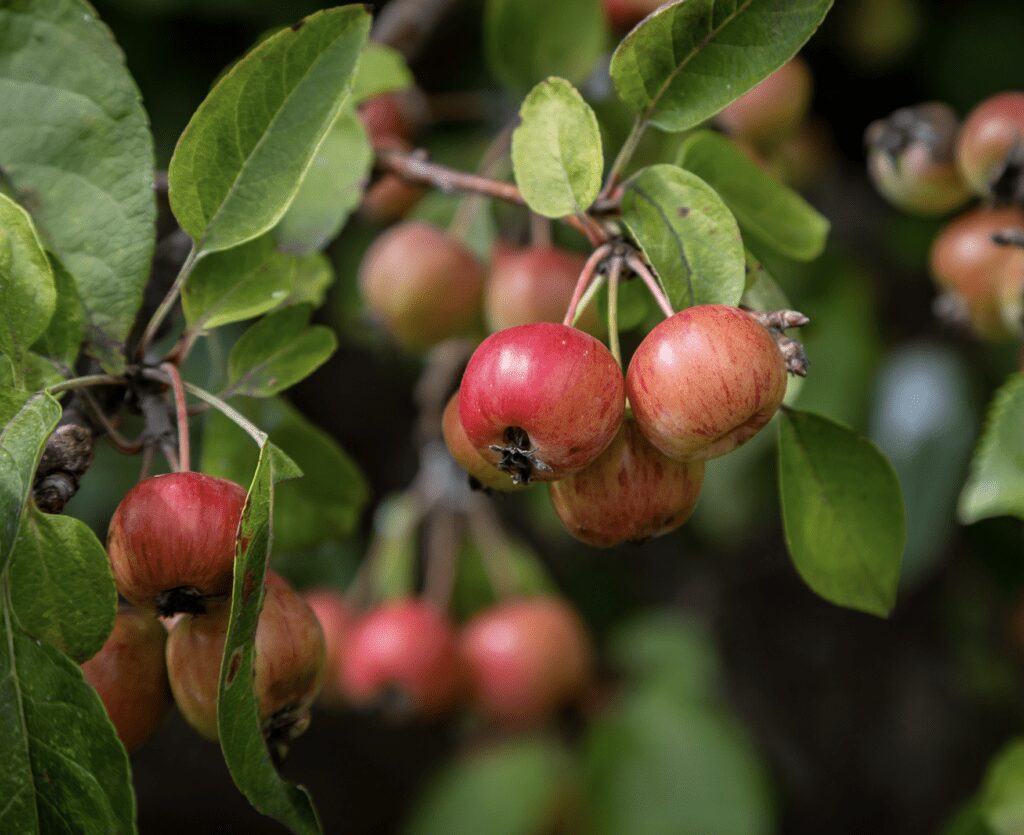
The sour, small crabapple resembles wild type apples, which have been cultivated and artificially selected to become bigger and sweeter.
generally, wild relatives of many “modern supermarket fruits” are smaller and have features that make them less attractive to human consumers (read here about adaptations that show humans are frugivores). The process of domestication is actually very similar to the natural evolutionary processes, but a bit like dispersal syndrome on steroids. Instead of haphazardly consuming fruits, we liked the best, we consciously took matters into our hands to propagate, breed, and select the best traits that we could – imitating the tropical paradise fruits!
Conclusion
All fruits that we eat today have highly beneficial properties for human health. However, edible tropical fruits have a special role in human nutrition! Their characteristics (including nutrition and anti-nutrients) were shaped by the needs and choices of our ancestors and other apes and primates.
Through the evolutionary forces exerted by dispersers, plants crafted the perfect fruits suited for their animal dispersers. Thus, not all fruits are equally suitable for all fruit-eating animals, but a match that has emerged through coevolutionary processes. This is also true for humans (which are frugivores) and our diet today: The healthiest, original fruit of humans are tropical fruits!
Everything about the fruit is a reflection of its evolutionary story – and matters a lot in understanding the human species-specific diet. The evolutionary food sources we have evolved to eat – and even shaped them – are what still is most biologically appropriate and important nutrition today! The topic should finally be considered in nutritional science – as today it is hardly ever heard of!
Many fruits are suitable for a variety of frugivores. But not all fruits are suitable for a specific frugivore.
Tropical fruits are key in the natural human diet!
This is why some fruits are more essential and healthy in the human diet than others! Tropical fruits are the main fruits in the human species-specific diet because they have co-evolved with primates and match our nutritional needs.

Humans are actually frugivores! Read more here.
References
- K. Valenta, O. Nevo, The dispersal syndrome hypothesis: How animals shaped fruit traits, and how they did not. Functional Ecology. 34, 1158–1169 (2020), doi:10.1111/1365-2435.13564.
- S. Sayago-Ayerdi, D. L. García-Martínez, A. C. Ramírez-Castillo, H. R. Ramírez-Concepción, M. Viuda-Martos, Tropical fruits and their co-products as bioactive compounds and their health effects: A Review. Foods. 10, 1952 (2021)
- O. Nevo et al., Frugivores and the evolution of Fruit Colour. Biology Letters. 14, 20180377 (2018).
- Shivani et al. (2021) ‘Introduction, adaptation and characterization of Monk Fruit (Siraitia Grosvenorii): A non-caloric new natural sweetener’, Scientific Reports, 11(1). doi:10.1038/s41598-021-85689-2.
- A Aziz, N. and Mhd Jalil, A. (2019a) ‘Bioactive compounds, nutritional value, and potential health benefits of indigenous durian (Durio Zibethinus Murr.): A Review’, Foods, 8(3), p. 96. doi:10.3390/foods8030096.
- Kistler, L. et al. (2015a) ‘Gourds and squashes (cucurbita spp.) adapted to megafaunal extinction and ecological anachronism through domestication’, Proceedings of the National Academy of Sciences, 112(49), pp. 15107–15112. doi:10.1073/pnas.1516109112.
- K. L. Kumawat, A. K. Gupta, J. I. Mir, Distant Hybridization for Improvement of Temperate Fruits and Nuts. Distant hybridization in horticultural crops (p.25-44) (2017)



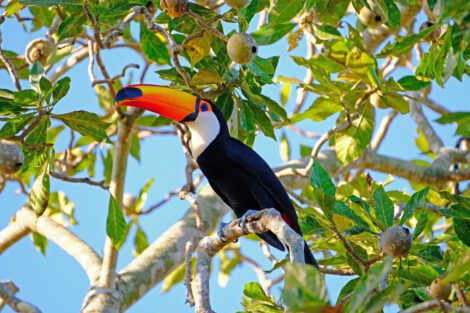
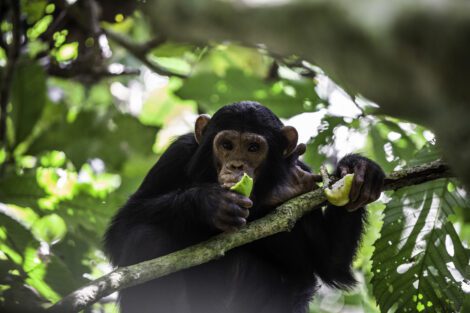
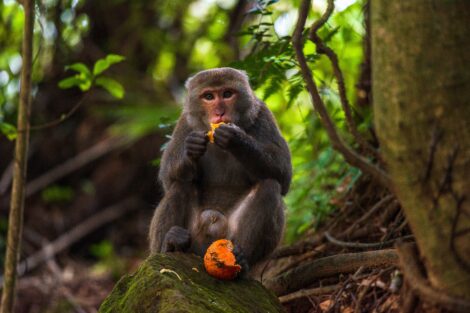


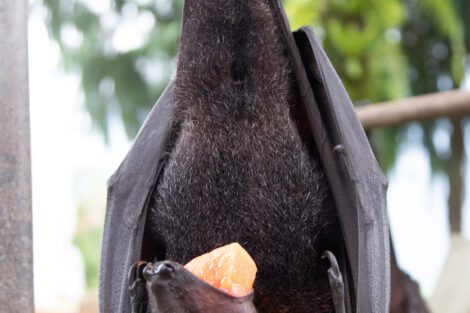



can you find good enough mangoes year round?
Fortunately we have air-imported mangoes here most of the time. But sometimes the quality is not the best. So I don’t eat them all the time. What about you? Do you struggle to access high-quality tropical fruits? I think it’s one of the biggest problem when we try to eat a species-specific raw diet outside the tropics…